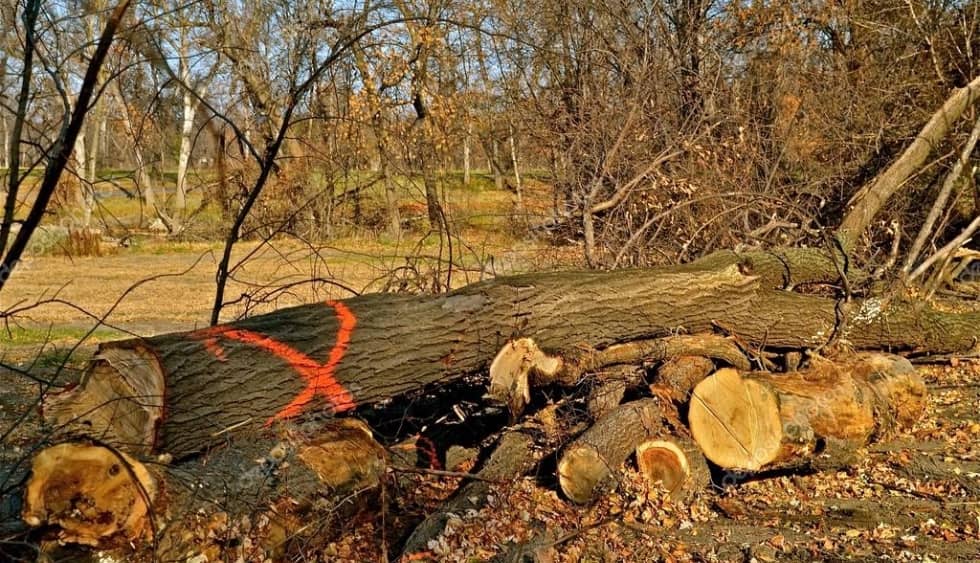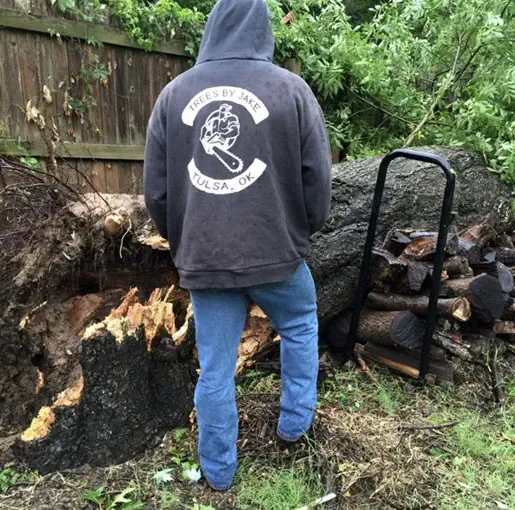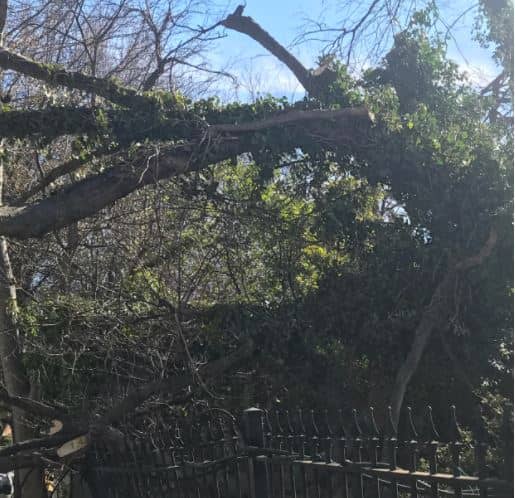
Root Rot Symptoms, Causes, and Treatment
Root rot is a disease that attacks the roots of trees growing in wet or damp soil. It is a decaying disease that spreads through soil and will lead to the eventual death of a tree.
Causes of Root Rot in Trees
The most common cause of root rot is wet soil, usually from poor drainage. Root rot can have a large impact on a tree, including contributing to a decline in health and/or structural integrity. Such soggy conditions actually prevent the roots from absorbing the necessary amount of oxygen or nutrients required to thrive and the roots begin to decay and die.
Soil fungus is also a common cause of root rot. Fungus can be present in the soil but dormant for a long time and may only appear once there is too much moisture. Fungus thrives in such moist conditions and spores will sprout and attack the roots. Weakened roots are more susceptible to fungus. Root rot is particularly problematic because it can spread to healthy roots or even other surrounding trees and shrubs even if the soggy conditions have been corrected or are no longer present. Trees of any age or species can be affected by the disease, though ornamental trees and shrubs are susceptible.

This Ash had root rot that caused it to come crashing down during a storm.
Symptoms of Root Rot in Trees
Symptoms and signs include a quick decline in health, discolored or wilted leaves, browning or blackening at the base of the trunk bark, mushroom growth on the trunk, roots, or lawn near the trunk, branch dieback, a thinning canopy, and overall poor growth. Diagnosis of the disease can be challenging since it can go unnoticed for an extended period of time since it occurs underground in the root system. Many symptoms of root rot also mirror the symptoms of a pest or insect infestation so it is a good idea to have a Certified Arborist make a proper diagnosis. Certified Arborists are specifically trained in tree biology and can easily identify and diagnose problems that can compromise the health and safety of a tree.
Treating Root Rot in Trees
Unfortunately, treatment of root rot is usually limited to removal of the entire tree as well as the stump and all roots, though in some cases, it may be possible to remove only the affected area if a minimal area of the root system has been damaged. Management of the infection is more likely to occur in younger trees rather than mature, established trees. Prevention is key. Avoid piling up too much soil or mulch against a trunk as doing so can trap moisture and encourage fungal spread. In some cases, grade changes may be needed to help ensure proper drainage to help prevent infection. You should also avoid wounds to the roots and be cautious when mowing as weakened roots are more susceptible to root rot. Treatment costs for root rot will vary depending on whether the entire tree, stump, and roots are being removed or if some sort of management plan is implemented. The cost for tree removal and stump and root grinding is determined by multiple factors, including the size, location, and health of the tree, as well as equipment access. The cost for replanting or root excavation are also determined by similar factors.
Tips For Preventing Root Rot In Trees
If you are planting a new tree, it is best to plant it in well-drained soil and avoid overwatering. In some cases, an irrigation moat can help keep water from pooling up over the roots and against the trunk. The location of the tree is also important in helping to prevent root rot and trees should not be planted next to or near sprinkler heads where the soil will receive an excess amount of water.

This Hackberry was suffering from root rot and fell onto multiple fences.
Facts About Root Rot In Trees
Root rot is a disease that affects the roots of trees and other plants.
Root rot may be caused by numerous fungi, but the most common are Armillaria mellea, Fusarium, Pythium, and Phytophtora.
Root rot is usually caused by oversaturated soil due to poor drainage, but can also be caused by fungal infections in the soil.
Symptoms of root may include discolored or wilted leaves, browning or blackening at the base of the trunk, branch dieback, a thinning canopy, and overall poor growth.
Root rot will eventually lead to the death of a tree and can spread quickly to surrounding trees and shrubs. Removal or management is recommended as soon as possible once root rot is diagnosed.
Treatment for root rot usually includes removal of the tree, stump, and roots is usually required once a tree has been affected by root rot, though in some cases, it may be possible to remove or treat only the affected area or replant.
Removing infected soil and a change in grading can help control the spread of root rot.
Root can be be prevented by planting trees in well-drained soil away from sprinkler heads and gutter drains and avoiding over-watering.
Contact A Tulsa Certified Arborist
If your tree is experiencing any of the above symptoms, it is important to contact a Tulsa Certified Arborist. Root rot should be addressed as soon as possible. Depending on the extent of the rot, the tree may be structurally unsound and at risk of falling. Jake at TREES BY JAKE is an ISA Certified Arborist and has extensive experience in identifying and diagnosing all types of tree disease, including root rot. Call or text us today at 918-500-9955.
Don’t forget to follow us on Facebook, Instagram, and Twitter!
Contact Your
Tulsa Tree Service
TREES BY JAKE has been providing tree removal services in Tulsa for over a decade. Jake is a Tulsa Certified Arborist and we have a variety of equipment to safely and efficiently remove trees. Call or text us today for your free estimate at 918-500-9955 and don’t forget to check us out on Facebook, Instagram, and Twitter!